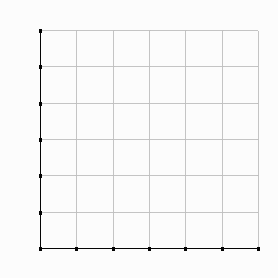Use the information in the table below to construct Doug's demand curve for pizza in the diagram to the right:

| Pizza slice | Maximum Doug would pay (=MB) |
| 1. | $5.00 |
| 2. | $3.00 |
| 3. | $2.00 |
| 4. | $1.00 |
| 5. | $0.50 |
| 6. | $0.00 |
Demand (D) and Marginal Benefit (MB)
Demand is a schedule or curve showing the relationship between various
prices (P) and quantities (Q) purchased by buyers.
Each buyer's individual demand curve comes from the buyer's benefit-cost rule:
Buy another unit if its marginal benefit (MB) to you exceeds (or at least covers) the
price you pay for it.
| Consider a product-market example:
Use the information in the table below to construct Doug's demand curve for pizza in the diagram to the right: |
|
|||||||||||||
|
| There are two ways to look at demand: | ||||||||||
| (1) | Given any price (P), the horizontal distance out to the demand curve tells us the quantity demanded (Qd). | |||||||||
|
||||||||||
| (2) | Given any unit, the vertical distance up to the demand curve tells us the maximum demand price for that unit, which equals the unit's marginal benefit (MB) to the person who buys it. | |||||||||
|
||||||||||
Key lessons:
(1) Demand curves reflect marginal benefits (MB).
(2) Demand curves always slope down (this is called the "law of
demand").
(3) Price steers consumption of an item to its highest-valued uses.
Looking ahead: The consumer surplus for any unit is the excess of what you are
willing to pay (your MB) over what you actually have to pay (the market price).
If the price is $1.50 per slice
(1) How many slices would Doug buy?
______
(2) How much consumer surplus would
Doug enjoy from slice 1? _____